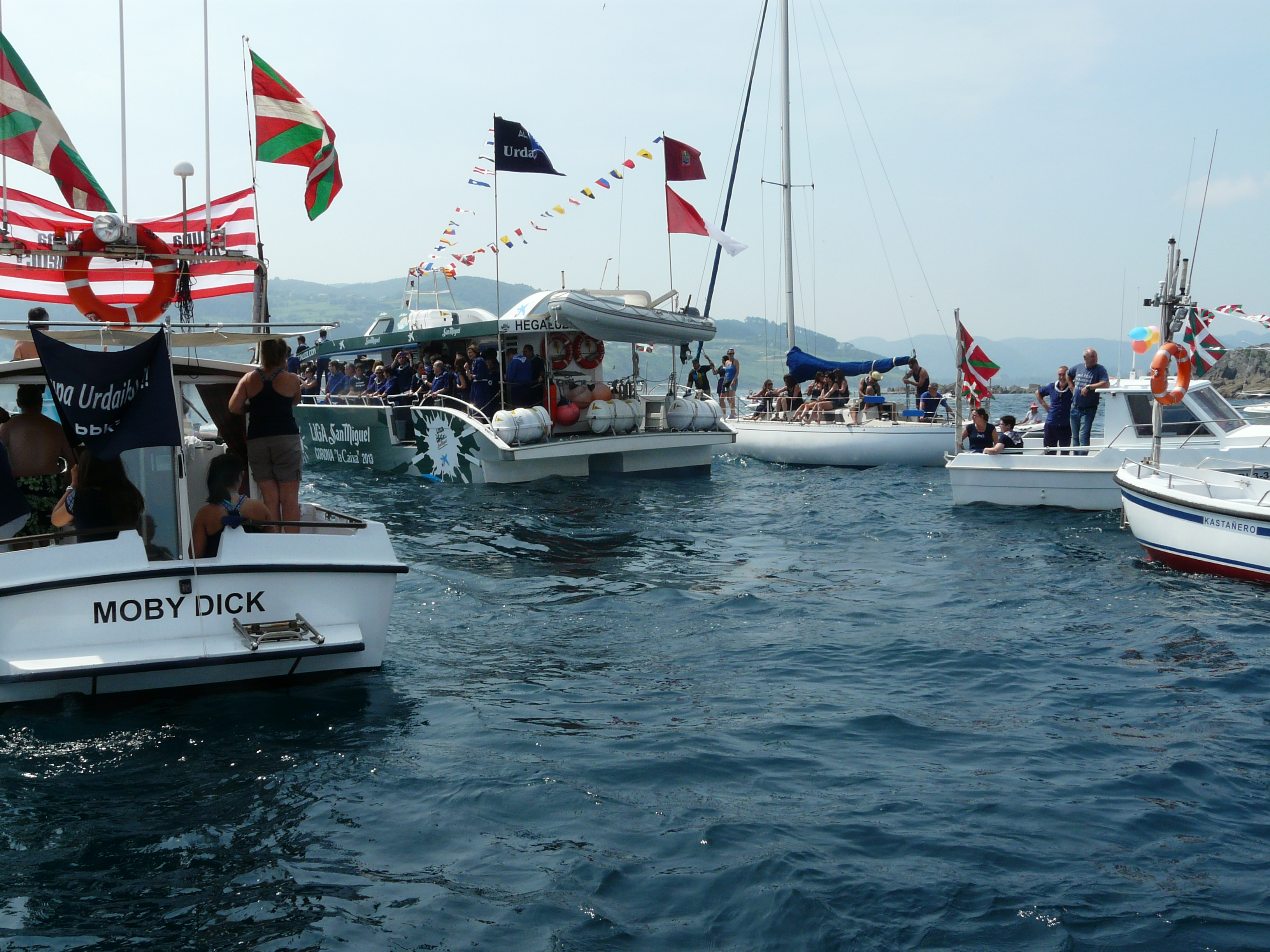Basque ethnography at a glance

The mayor of Bermeo throws the roof tile. Igone Etxebarria, 2013. Labayru Fundazioa Photographic Archive.
The feast of the Magdalene is celebrated on 22 July. Blue is the colour of the day, and the taste of the sea permeates the event. It is a great day in the neighbouring coastal cities of Bermeo, Elantxobe and Mundaka, and yet people from Bermeo live it with special intensity.
The origins of the feast date back to ancient times. According to tradition, both Bermeo and Mundaka claimed ownership of the Isle of Izaro and were unable to reach an agreement. In the seventeenth century they finally decided to resolve the conflict by betting the island on a rowing race with their neighbours from Elantxobe acting as witnesses. Bermeo won the challenge and has since asserted its rights over the island. Past differences and disputes aside, all three cities enjoy at present a grand festive day together.

Boats bound for Elantxobe. Igone Etxebarria, 2013. Labayru Fundazioa Photographic Archive.
Very early in the morning at the port of Bermeo, it is clearly a day out of the ordinary: people come and go, the boats are tuned up, lunch is arranged… Everything must be ready to take to sea!
Celebrations start at break of day. The members of the corporation meet under the arches of city hall. In keeping with tradition, they dress in dark blue nankeen and wear checked scarves at the neck.
After listening to the Alkate-soinua hymn, municipal officials, txistu players and citizens march across the old quarter towards the church of St Euphemia to the sound of the Zortziko of the Magdalene. The mayors and other authorities of Elantxobe and Mundaka accompany them. The youngest councillor bears the banner.
After mass they all depart by boat and sail in procession to the Isle of Izaro. The crowd at the port bids them farewell waving their scarves and with plenty of cheers. Bermeo authorities plant the local flag and the Basque flag on the island and soon the feast comes to its climax: “Roof water from Bermeo reach this far” declares the mayor of Bermeo, and throws a roof tile into the sea to assert their sovereignty. At that very instant the boats sound their horns.
Then they set course for Elantxobe. The mayor of Elantxobe welcomes them and hands the baton of command over to the mayor of Bermeo. The delegation heads for Elizabarri Square along with the txistu players.
Following lunch in the afternoon they leave for Mundaka. The baton ritual is repeated and eventually they return to Bermeo. Everybody is waiting for them at the port and their arrival is one of the most emotional moments of the day. From the port they all make for city hall. The traditional aurresku is performed and partying continues for as long as the body allows.
Akaitze Kamiruaga – Popular Cultural Heritage Department – Labayru Fundazioa
Translated by Jaione Bilbao – Language Department – Labayru Fundazioa

